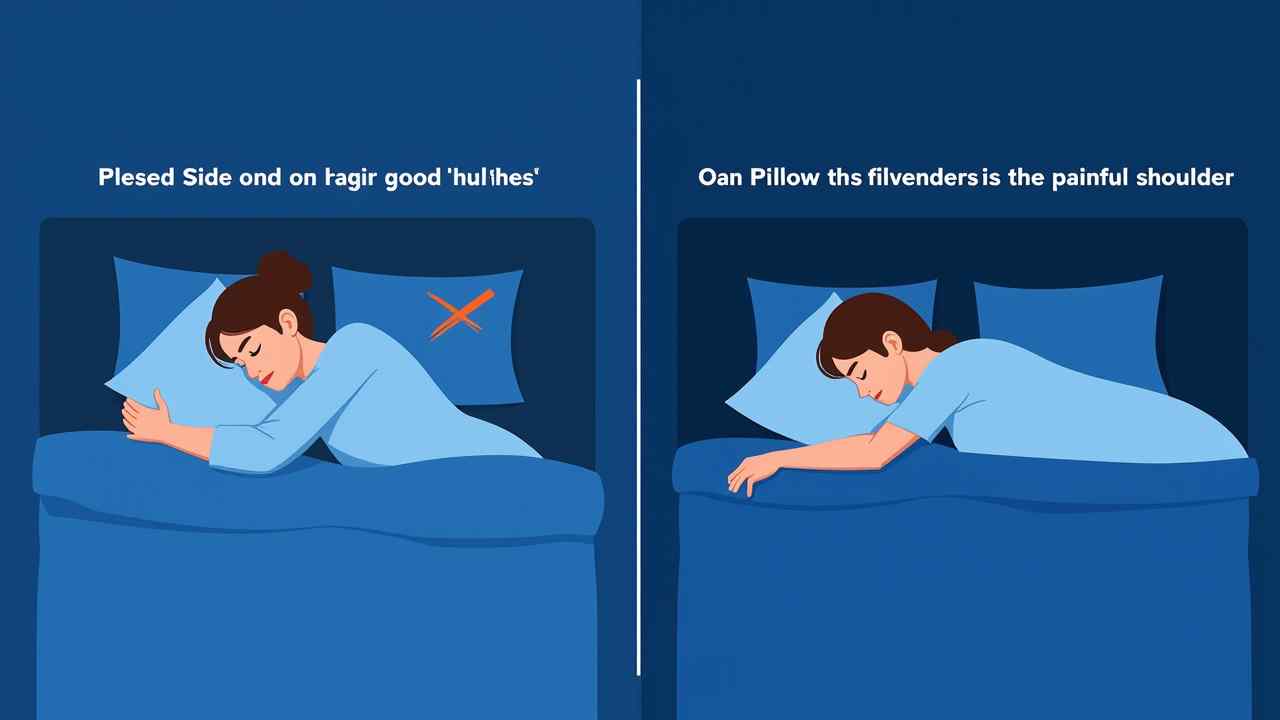
🩺 How to Sleep with Calcific Tendonitis (A Guide to a Pain-Free Night)
🩺 How to Sleep with Calcific Tendonitis (A Guide to a Pain-Free Night) 🩺
❗ Important Medical Information: Calcific tendonitis is a medical condition that causes significant pain. It requires a proper diagnosis and treatment plan from a doctor or orthopedic specialist. This guide provides supportive tips for managing pain during sleep and is not a substitute for professional medical advice.
Calcific tendonitis can be an extremely painful condition. It occurs when calcium deposits build up in a tendon, most often in the rotator cuff of the shoulder. A classic symptom is severe pain that gets much worse at night. This can make getting a good night's sleep feel impossible.
So, how do you sleep with calcific tendonitis without the constant, throbbing pain? The key is to find a sleeping position that reduces pressure on the shoulder. With a few strategic pillows, you can find significant relief. Let's explore the best strategies. ✅
🤔 Why is the Pain Often Worse at Night?
There are a few reasons why your shoulder pain feels more intense at night. Understanding these can help you address the problem. The pain is not just in your head.
First, lying down can put direct pressure on the inflamed tendon and bursa. This is especially true if you are a side sleeper. Second, as your muscles relax in sleep, your arm can fall into an awkward position. This can compress the tendon. Finally, inflammatory processes in the body can sometimes increase at night.
🛌 What is the Best Sleeping Position for Shoulder Pain?
The goal is to keep your shoulder in an open, neutral, and supported position. This prevents the tendon from being pinched or compressed. There are two main positions that work best. You will need a few extra pillows.
How should you sleep on your back?
For many, sleeping on the back is the best option. This takes all direct pressure off both shoulders. To make it even more comfortable, use pillows to support your painful arm. Place a thin pillow under your arm and hand. This slightly elevates it and keeps it in a relaxed, neutral position.
What if you are a side sleeper?
If you are a side sleeper, the number one rule is: do not sleep on your painful shoulder. You must sleep on your "good" side. The next step is the most important trick for how to sleep with calcific tendonitis. You need to hug a large pillow.
By hugging a firm pillow (a body pillow is perfect), you support the weight of your painful arm. This prevents it from falling across your body. It keeps the shoulder joint open and stable. This is the single most effective trick for a side sleeper.
- How Can You Use Pillows to Create a "Pain-Free Nest"?
Using pillows strategically is your best defense against nighttime pain. Think of it as building a supportive nest for your body. Here is how to put it all together.
- If you sleep on your back: Place one pillow under your head. Place another, thinner pillow under your painful arm to support it.
- If you sleep on your side: Place a firm pillow in front of you to hug. Place another firm pillow between your knees. This helps to keep your spine and pelvis aligned.
- During a severe flare-up: Sometimes, the only comfortable position is to sleep in a reclined position. Sleeping in a recliner chair or propped up in bed with several pillows can take all the pressure off your shoulder.
🧊 What Other At-Home Tips Can Help Before Bed?
A few other simple habits can help to reduce your pain at night. Try incorporating these into your bedtime routine. They can help you fall asleep more comfortably.
Applying an ice pack to your shoulder for 15-20 minutes before bed can be very effective. This helps to reduce inflammation and numb the area. Also, talk to your doctor about your pain medication. Taking an anti-inflammatory medication about an hour before you go to sleep can help manage pain through the night.
These tips can provide significant relief. However, the key to long-term healing is to treat the underlying condition. Always work with your doctor and physical therapist to find the best treatment plan for you. 🩺